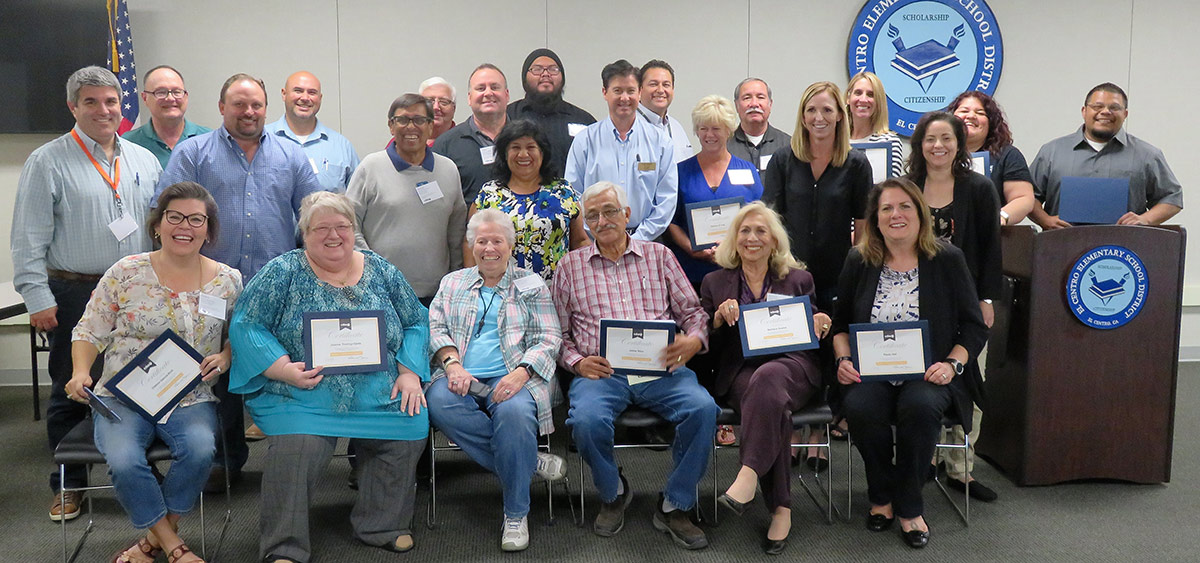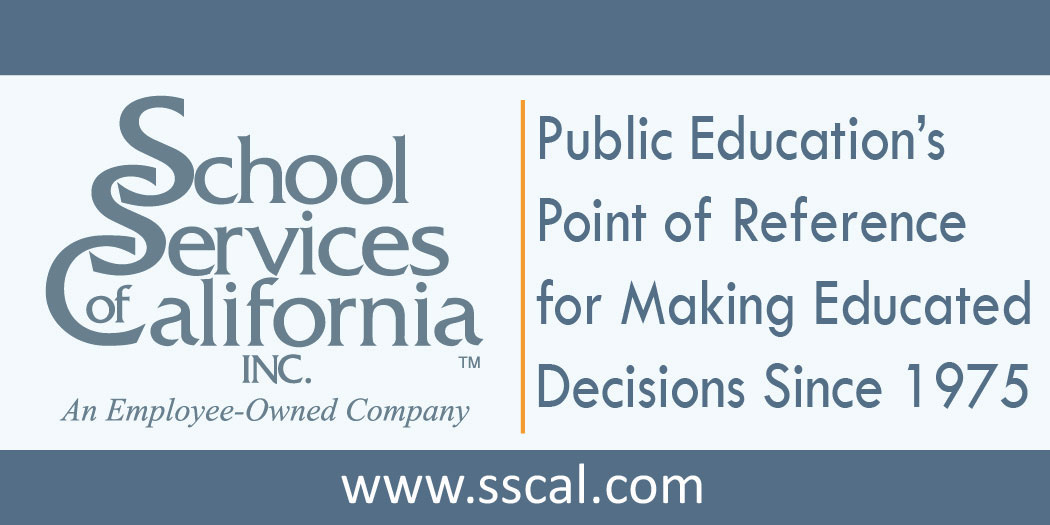

The Gavin Newsom vs. John Cox race for governor is not expected to be a headline-grabbing affair since Democrat gubernatorial candidates snagged 61 percent of the June 5 primary vote to Republican candidates’ 37 percent. Visit www.csba.org/elections for results of the June 5 election and information on the Gubernatorial and SPI candidates.
While Marshall Tuck pulled in just over 37 percent of the vote in the SPI race, Assemblymember Tony Thurmond (D-Richmond) came in tight on Tuck’s heels at 35 percent, sending the two into a November runoff. The two “also-rans” in the SPI race — Lily Ploski and Steven Ireland — unexpectedly cobbled together the remaining 27 percent.
- Visit www.csba.org/Newsroom for links to digital versions of current and past issues of California School News.

Secretary of Education Betsy DeVos was recently criticized for an inaccurate statement regarding schools’ and local communities’ ability to choose whether to report undocumented students or students’ families to Immigration and Customs Enforcement. Her statement misrepresented existing law, and the Secretary has subsequently walked back her comments.
The controversy began on May 22, when Secretary DeVos responded to a question about whether a teacher or principal has the responsibility to notify ICE about an undocumented student or a student’s undocumented family, stating it was “a school decision” and “a local community decision.” Secretary DeVos provided an updated statement in the days that followed, saying that “schools are not, and should never become, immigration enforcement zones,” and then further stated before the Senate Appropriations subcommittee that “in a school setting, a student has the right to be there and the right to learn. And so everything surrounding that should protect that and enhance that student’s opportunity and that student’s environment.” She clarified that she didn’t think school officials could legally call ICE to report an undocumented student.

- Supreme Court decision in Plyler v. Doe protects the right of undocumented immigrant children to a free public education
- California Education Code requires school districts to adopt a policy limiting assistance to immigration enforcement; cannot gather information on students’ citizenship status

Senior Director of Communications:
Troy Flint | tflint@csba.org
Managing Editor:
Kimberly Sellery | ksellery@csba.org
Marketing Director:
Serina Pruitt | spruitt@csba.org
Staff Writers and Contributors:
Hugh Biggar | hbiggar@csba.org
Aaron Davis | adavis@csba.org
Mike Ambrose | mambrose@csba.org
Tezeta Stewartz | tstewartz@csba.org
Graphic Design Manager:
Kerry Macklin | kmacklin@csba.org
Senior Graphic Designer:
Carmen Rodriguez | crodriguez@csba.org
Mike Walsh | Butte COE
President-elect:
Emma Turner | La Mesa-Spring Valley SD
Vice President:
Xilonin Cruz-Gonzalez | Azusa USD
Immediate Past President:
Susan Henry | Huntington Beach Union HSD
CEO & Executive Director:
Vernon M. Billy
California School News (ISSN 1091-1715) is published 11 times per year by the California School Boards Association, Inc., 3251 Beacon Blvd., West Sacramento, CA 95691. 916-371-4691. $4 of CSBA annual membership dues is for the subscription to California School News. The subscription rate for each CSBA nonmember is $35. Periodicals postage paid at West Sacramento, CA and at additional mailing office. POSTMASTER: Send address changes to California School News, 3251 Beacon Blvd., West Sacramento, CA 95691.
News and feature items submitted for publication are edited for style and space as necessary.


In January 2016, CSBA’s Board of Directors directed the organization to “drive the education policy agenda to ensure high-quality education for every student by addressing adequacy and opportunity gaps.” I have rarely been prouder of CSBA then when the board affirmed its commitment to equity with this strategic priority. While I’m just as proud today of CSBA’s work towards that goal, recent developments have caused me to reflect on that day and what it will take to realize our ambitions for a school system that prepares every student — regardless of background — for success in college, career and civic life.
In late April, the U.S. Department of Education released a pair of reports that showed striking disparities between black students and their white peers, both in the area of school discipline and in education in the math and sciences. Where discipline is concerned, the study found that the rate at which African-American students were arrested or referred to police increased sharply in 2015–16, the most recent year for which data is available. While African-American students make up just 15 percent of the U.S. population, they accounted for nearly a third of all students arrested at school or referred to law enforcement. Students with disabilities were also dramatically overrepresented in police encounters, representing 12 percent of the overall student enrollment and 28 percent of students in police encounters.
On June 27, 2018 the U.S. Supreme Court ruled that compelling nonconsenting employees to pay agency fees to unions is a violation of their First Amendment rights.
Analyzing the Janus v. AFSCME decision
he U.S. Supreme Court issued its highly anticipated opinion on Wednesday, June 27, 2018, regarding Janus v. American Federation of State, County, and Municipal Employees. As expected, the Court ruled, by a 5-4 margin, that compelling employees who do not belong to the union to pay agency fees, also known as fair share fees, to unions is a violation of their First Amendment rights. This decision by the Court overturns its 1977 ruling in Abood v. Detroit Board of Education.
Abood, a 1977 Supreme Court case, gave public employees represented by a union the right to opt-out of paying full dues, but upheld the legality of requiring them to pay an “agency fee,” sometimes referred to as a “fair share” fee. That fee is an amount calculated to cover the costs of union representation relating to the collective bargaining process, contract administration and pursuit of matters affecting wages, hours and conditions of employment. It does not include the costs of a union’s political activities.
What is “Janus”?
“Janus” refers to Janus v. AFSCME, a case recently decided by the United States Supreme Court. The case involved a challenge to the Illinois Public Labor Relations Act, which, like laws in California and 21 other states, required public employees represented by unions to pay an “agency fee” to the union if they do not wish to pay full dues. The plaintiff contended that the agency fee requirement amounted to “compelled speech” in violation of the First Amendment, and the Court agreed. The Court’s decision in favor of the plaintiff will likely have an adverse financial impact on school employee unions, and in some local educational agencies, may have implications for their labor-management relations and may affect the processes for back-office operations such as payroll deductions.
Public employers must cease deductions from paychecks of employees who are union non-members immediately. Public agencies should only communicate in a neutral and factual way about the decision and what changes may result. In communicating with employees, public employers should keep in mind the recently enacted Senate Bills 285 and 866, which provide that public employers shall not deter or discourage public employees from becoming or remaining members of an employee organization or from authorizing representation by an employee organization, or from authorizing dues or fee deductions to an employee organization.
March 2018 Masters in Governance Graduates
CSBA is proud to recognize our Masters in Governance graduates and salute their exceptional commitment to professional development in the service of students. MIG completion signifies mastery of the roles and responsibilities of school boards and a strong understanding of the knowledge and skills needed to build and support an effective governance structure that helps produce better outcomes for students. MIG is just one part of CSBA’s commitment to our strategic initiative to support professional development by providing accessible, high-quality training.

Seated, L-R
Diahna Garcia-Ruiz, Delegate, Region 18B, Central Union HSD
Joanne Thoring-Ojeda, Board Member, Colton Joint USD
Emma Lou Jones, Board President, Central Union HSD
Cesar Guzman, Board Member, representing Jaime Silva, Superintendent, Brawley ESD
Barbara Avalos, Delegate, Region 17, National SD
Paula Hall, Board President, Sweetwater Union HSD
Charles Bush, Superintendent, Palo Verde USD
Bryan Thomason, Superintendent, Imperial USD*
Alfonso Hernandez, Board President, Palo Verde USD*
Beatriz Rodriguez, Board Member, Meadows Union SD
David Haubert, MIG Faculty Member
Dianne El-Hajj, Board President, Santee SD
Jamey Mullion, Board Member, Palo Verde USD
Martha Gutierrez, Board Member, Palo Verde USD
Michael Chlebik, Board Member, Morongo USD
James Garcia, Board Member, Seeley Union ESD
Jackie Loper, Board President, Westmorland Union ESD
Todd Evangelist, Board Member, Central Union HSD*
Tomas Jefferson, Board Member, San Pasqual Valley USD
Carlos Gonzales, Superintendent, Calexico USD
Ralph Fernandez, Delegate, Region 18B, Brawley Union HSD
Leighangela Brady, Superintendent, National SD
Brenda Villegas, Board Member, Meadows Union SD
Pompeyo Tabarez, Board Member, Heber ESD
*Currently working toward full MIG course completion
Summer is a time of transition between finalizing business from the last school year and preparing for the next one. Your governance team can use this time to look ahead and prepare for next year’s superintendent evaluation cycle by finalizing the goals and success indicators on which the superintendent will be evaluated moving forward.
The evaluation is a tool to align the superintendent’s goals with those of the district and of the Local Control and Accountability Plan. The evaluation is also the mechanism that defines what success for the district looks like and utilizes indicators to evaluate whether or not that success has been achieved.
How to structure the superintendent evaluation
As the governance team, you want to build an evaluation cycle that is all about focus, alignment and continuous improvement:
- Reflect on the LCAP/district goals and use them to drive the superintendent goals, criteria and success indicators.
- Focus on identifying four to six superintendent goals which reflect the top priorities of the LCAP/district goals.
- Create superintendent goals that follow the SMART model — Specific, Measurable, Achievable, Relevant and Time-based.
- Ensure success indicators are written to track progress by being quantifiable and focused on behavioral changes, support mechanisms or resource shifts.
Here is an example on how the LCAP/district goals can drive the superintendent evaluation goals:
- LCAP/District Goal: All students will have access to and be successful in a broad-based curriculum.
- Superintendent Evaluation Goal: Develop a district-wide data system to drive district improvements and raise student achievement.
- Success Indicators: Superintendent will develop a baseline student profile to gauge future student progress and achievement. The profile will include basic demographic and academic information including standardized test and benchmark test results in core academic areas. Staff will regularly utilize this information to determine student growth and inform instruction.
CSBA’s Governance Consulting Services provides board development guidance, including services on superintendent evaluations. Evaluations are also covered in the Human Resource module in CSBA’s Masters in Governance, and CSBA will be offering a superintendent evaluation tool soon. If you would like more information about superintendent evaluations, please email gcs@csba.org.
According to the California Department of Education, more than 40 percent of K-12 students in the state already speak at least two languages, and more than 72 languages are spoken in its schools, a resource that Global California will build on.
“As the world comes closer together, fluency in another language opens up opportunities for people to succeed economically and to take part in diverse cultural activities,” Torlakson said in a statement.
By 2030, Torlakson’s plan calls for half of all K-12 students to be enrolled in programs leading to proficiency in two or more languages, tripling the number of students who receive the State Seal of Biliteracy; and quadrupling the number of dual-language immersion programs. The initiative builds on the California English Learner Roadmap and Proposition 58 — a measure approved by voters in 2016 to allow schools to create dual-language immersion programs.
resource
The California Department of Education’s regulations for implementing the initiative have now been approved and took effect on July 1, 2018. These regulations are designed to clarify the initiative and to help schools, districts and county offices of education implement its provisions.
As these new regulations continue to be implemented, it is important for board members to be aware of their requirements and to ensure that their local educational agencies provide students with language acquisition programs that meet all requirements, and that they have established a process for receiving and responding to parent input on their language acquisition programs and language programs.
Chief among these challenges is ensuring that all students have equal opportunity to access high-quality math programming. A critical component to ensuring access to high-level course work for all students is for districts to develop a clear process for appropriate math course placement decisions.
According to a report released in 2013 by the Lawyers’ Committee for Civil Rights of San Francisco Bay Area, in many districts, high school freshmen who have successfully completed Algebra I in eighth grade are again placed in an Algebra I class in ninth grade. The report also found that the practice of having ninth grade students repeat Algebra I disproportionately affects students of color and students from low-income families. While its significance is not always recognized, inappropriate placement may impede a student’s ability to complete the sequence of coursework required for college admission and therefore affect future earning power and other measures of success.

- Inappropriate math placement affects a student’s trajectory through school and may affect college admission
- The California Mathematics Placement Act of 2015 requires districts to develop and adopt fair, objective and transparent math placement policies.
Originally funded through a Community Challenge grant, the program provides a safe haven in which girls can speak out against violence and substance use, advocate for themselves and one another, and become connected to their community.
“When youth feel supported and find the personal strength to make healthy decisions about their own lives, they feel empowered to help others and to make a difference in their community,” said Napa COE Superintendent Barbara Nemko.
UpcomingEvents info: 800-266-3382
MIG Courses 1 & 2
MIG Courses 1-5
MIG Courses 3 & 4
MIG Courses 1-5
MIG Course 5






